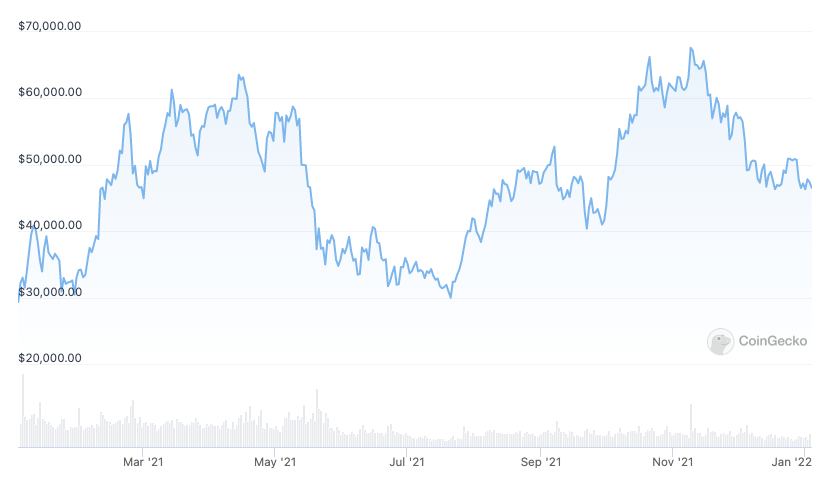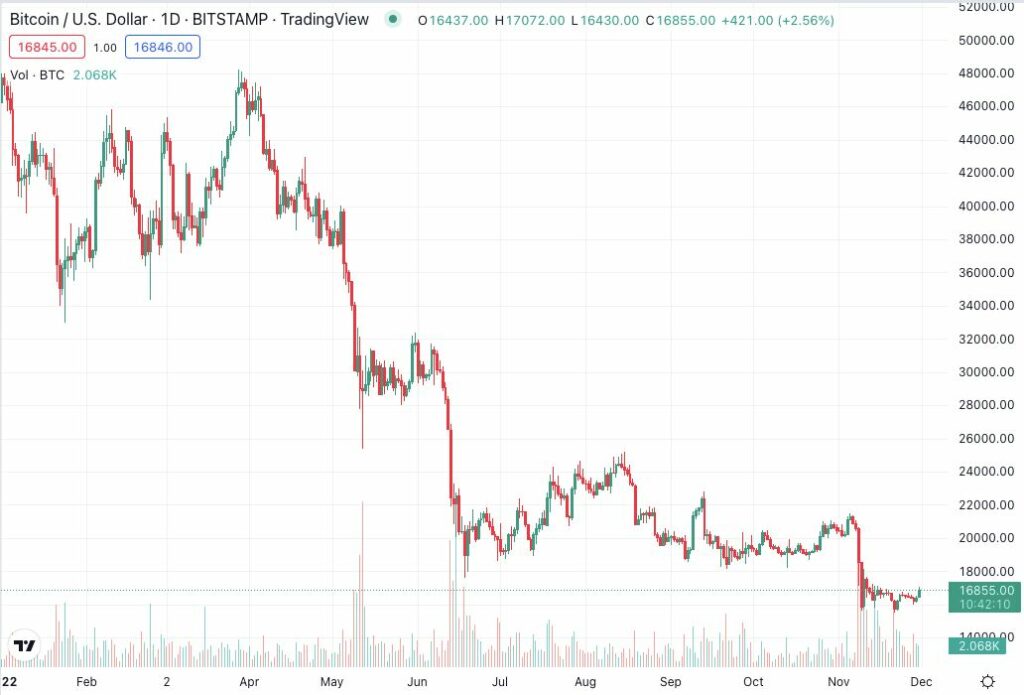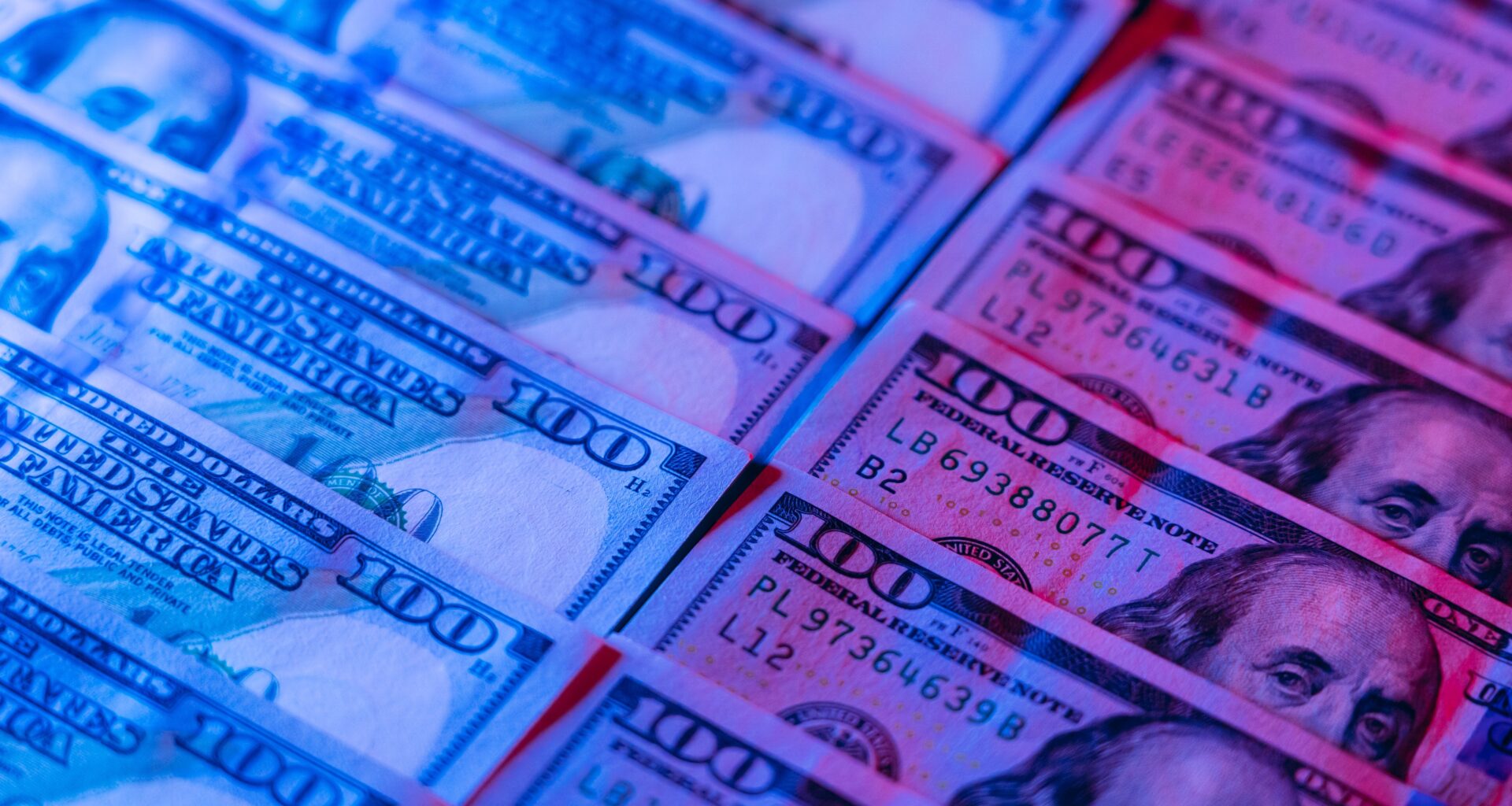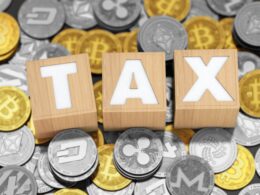While there seems to be no end in sight for an increase in interest rates, the US Federal Reserve officials finally agreed to slow down the pace of the increase in order to reduce “the risk of instability in the financial system.”
Both stock and crypto markets have been negatively affected ever since inflation started rising in 2021, which prompted a response from the Fed in the form of quantitative tightening and an increase in rates.
In this article, we will use the price of BTC to represent the general crypto market as altcoins tend to follow BTC’s price action.
Interest Rates in 2022

In 2020, as the Covid-19 pandemic spread across the globe, the Fed announced two huge rate cuts at unscheduled emergency meetings in March, returning the federal funds’ target rate range of zero to 0.25%.
Up until the first quarter of 2022, the rates were virtually zero. Then, the Fed started with a 25 bps increase in March, followed by a 50 bps jump in May. Following these smaller rate increases, the Fed made four consecutive 75 bps increases in June, July, Sept., and Nov. — all part of a central bank’s strategy to combat stubbornly high inflation.
Crypto Prices in 2022

2022 is the year of a downtrend for the crypto market, resembling the bear market of 2018. The entire crypto market capitalisation, which surpassed $3 trillion in 2021, has now tanked under $865 billion.
The major cryptocurrencies, Bitcoin (BTC) and Ethereum (ETH), are currently trading more than 76% lower than their all-time peak.
Top altcoins like Ripple (XRP), Dogecoin (DOGE), Cardano (ADA), Polkadot (DOT), Shiba Inu (SHIB), Litecoin (LTC), Tron (TRX), and Chainlink (LINK), meanwhile, have lost 80% to 90% of their value since hitting their ATHs.
The majority of altcoins, however, have taken even more brutal beating and are down anywhere between 90% to 99%. This list includes prominent names like Solana (SOL), Avalanche (AVAX), Filecoin (FIL), Near Protocol (NEAR) as well as BitTorrent (BTT), Rarible (RARI), Smooth Love Potion (SLP), SuperRare (RARE), Olympus DAO (OHM) and tons of obscure cryptos.
Interest Rates News and Changes in Crypto Prices

As we stated above, cryptocurrencies are going through a deep correction. And it is yet to be seen if the market has found the bottom.
It is possible that the demand for BTC and other cryptos may diminish even further with rising rates — driving people away from the digital asset, as traditional savings accounts provide higher returns at lower levels of risk. Higher rates may remove some of the shine off crypto investments since it gives savers a chance to get a more appealing rate in a lower-risk manner.
This is because, with higher interest rates, investors are moving away from riskier assets such as cryptocurrencies and stocks and parking their money in “safer” assets like cash. This causes a flight of capital away from risky assets to safer assets which causes a drop in demand, and therefore prices of risky assets like cryptocurrencies, too, go down.
Further interest rate increases are also a potential recession trigger, prompting investors to park their money in safer assets such as the 10-year Treasury Note. These potential higher rates could hit stocks, crypto, commodities like gold and oil, as well as a host of other investments for the rest of this year and through 2023.
While increases would be welcome news for depositors, who saw little to no returns on their capital over the years they had been depositing, even a slight variation in rates can significantly raise the mortgage payments for homeowners in adjustable-rate deals.
A higher Fed Funds rate is good news for savers, who have seen rates creep up in savings accounts. After all, a higher fed funds rate means higher borrowing costs, which may decrease the demand for loans from banks and other financial institutions.
Commercial banks pass these higher borrowing costs along to consumers through higher interest rates that they charge on loans. At extremely high rates, the opportunity cost of holding a non-returning asset such as gold becomes high, driving down the demand for gold.
If inflation, and thus Treasury yields, were to increase substantially, then, based on past behavior, Bitcoin prices are likely to fall. There would be less money to pursue returns on the capital markets and higher discount rates, meaning the asset prices would fall.
When a cryptocurrency market crashes and asset prices drop, investors are also more likely to sell off their assets in order to avoid more losses. This is because institutional investors are increasingly adopting cryptocurrencies, who view crypto as an asset class like high-risk technology stocks, and anything that impacts the stock market will impact crypto as well.
FOMC Meeting Dates
The Federal Open Market Committee (FOMC) meetings are pre-scheduled and usually occur around the same date every year. The FOMC meets eight times a year, where the committee discusses the outlook for the US economy and monetary policy options. Some of the meetings are also associated with a Summary of Economic Projections (SEP).
During the bull market of 2021, the FOMC meeting occurred on the following dates: January 26-27, March 16-17, April 27-28, June 15-16, July 27-28, September 21-22, November 2-3, and December 14-15.
Meanwhile, during this year’s bear market, the FOMC held its meetings on January 25-26, March 15-16, May 3-4, June 14-15, July 26-27, September 20-21, November 1-2, and December 13-14.
FOMC’s 2023 schedule is the same as this year except for its first meeting, which will be held on Jan 31- Feb 1.
BTC Prices on These Dates

If we look at the price performance of Bitcoin during these two-day FOMC meetings, we find that it largely depends on the macro condition. During such events, bitcoin prices also tend to eventually follow the stock market direction.
In 2021, during the first three meetings as well as in July, BTC price recorded a slight upward movement, but for the rest of the four months, BTC price went down. Now, this year, the majority of the time, Bitcoin prices went down during these meetings.
This makes sense, given that the Fed remained extremely hawkish to curb high inflation and raised interest rates.
Conclusion
Put simply, the general impact of consecutive interest rate increases could weigh on Bitcoin and cryptocurrencies heavily, as it has been throughout this year. Until the Fed reverses its interest rate policy, it is highly unlikely the crypto market can recover.
Given the continued economic uncertainty, crypto investors can expect increased price volatility. In fact, there is still the possibility that bitcoin and other cryptocurrencies may fall even further. The aftermath of a crypto crash is never fun to deal with, but it does provide opportunities for people who still believe in the future of digital currencies.









